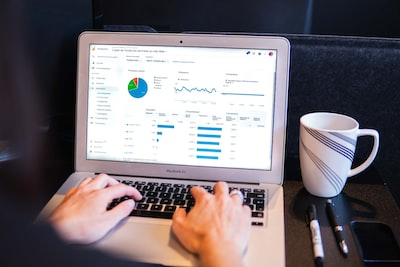Imagine if your e-commerce store could attract more eyes, get more clicks, and convert those visits into sales. That’s the heart of e-commerce SEO optimization.
It’s all about tweaking your online space to climb up the search engine ranks.
You’ll learn the craft behind high-converting product descriptions that do double duty by pleasing algorithms while persuading humans.
Plus, we’ll tackle some common pitfalls, like duplicate content that might be tripping you up without even knowing it.
Last but not least, you’ll learn why internal links are secret weapons for spreading good SEO vibes across your pages.
Vital Summary:
- E-commerce SEO Optimization: Guide to enhance online store visibility, appeal, and sales.
- User Experience and SEO: Emphasizes UX for customer satisfaction and improved SEO success.
- Optimizing Site Architecture: The importance of planning and organizing site structure for users and search engines.
- Technical SEO Integration: Insights into handling technical aspects, including sitemaps, mobile optimization, and smooth navigation.
- On-Page SEO and Content Crafting: Role of on-page SEO, focusing on product descriptions, title tags, meta descriptions, and image optimization.

Crafting an Effective Ecommerce SEO Strategy
Building a solid e-commerce SEO strategy is like constructing a bridge. It requires careful planning, strong materials—in this case, keywords and site architecture—and the know-how to bring shoppers from point A, their search query, to point B, your online store.
The Importance of User Experience in Ecommerce SEO
User experience (UX) isn’t just about keeping your customers happy; it’s also a key player in your search engine optimization game.
Think of UX as the fuel that powers the engine, driving traffic to your e-commerce website.
If visitors enjoy their time on your site and find what they need without hassle, thanks to intuitive navigation and relevant content, they’re more likely to stick around longer.
This not only increases potential sales but also signals to search engines that you’re providing value, which can improve seo success.
A seamless user journey does wonders for customer retention too, because, let’s face it—who doesn’t appreciate smooth sailing?
So when you design with UX in mind, consider elements like clear category labels or features such as a dynamic search bar where people type queries naturally—as if asking you personally for help finding something specific on-site.
Optimizing Site Architecture for Search Engines and Users
Making sure both users and Google understand how to navigate through your digital marketplace is crucial. You want anyone (or any bot) who lands on your homepage title to feel confident about where they are heading next within clicks.
Your structure and easy-to-follow path should guide them effortlessly towards products while spreading out those high-search volume terms throughout headings effectively yet organically.
An organized layout helps decrease bounce rates since folks won’t get lost trying to locate items they came looking for based on some long-tail keyword phrase typed into Google at 1 AM during their hunt for perfect pet accessories.
Integrating Technical SEO into Your E-commerce Platform
Tackling the technical aspects of ecommerce SEO might seem difficult but it isn’t.
One thing to know is that it is important to leverage sitemaps, as these are essentially roadmaps that lay bare every nook-and-cranny product page across vast virtual shelves, making easier indexing jobs and thus helping boost engine rankings along the way.
Another thing is to make sure your site looks great on phones, as people often find websites while scrolling on their smartphones. It’s also crucial to make the website responsive and user-friendly for those mobile devices.
Mastering On-Page SEO for Ecommerce Website
Imagine your online store as a bustling marketplace. Just like vendors shout to sell their wares, on-page SEO helps you stand out in the digital bazaar we call search engines.
It’s all about tweaking and tuning every webpage so that when someone is hunting for what you’ve got, they find you first—and fast.
Crafting High-Converting Product Descriptions
Your product descriptions are more than just words; they’re persuasive sales pitches that can seduce potential customers into hitting ‘Buy’.
But let’s not forget Google’s hungry bots scanning each line to decide if your page deserves the spotlight.
To satisfy both parties, fuse creativity with strategy: sprinkle effective keywords throughout your text without making it sound robotic.
By using long-tail keywords aligned with user intent, those descriptive paragraphs do double duty—they captivate people and charm algorithms.
Remember how-to articles? They’re engaging because they solve problems step-by-step—your product descriptions should adopt this same helpful spirit by addressing specific customer needs or questions.
When visitors realize that you understand exactly what itch they need scratched, conversion rates climb higher than Everest.
An epic description isn’t complete without mentioning its impact on bounce rates, though—a snappy write-up keeps eyes glued longer, which signals quality content to search engines and can boost engine rankings faster than caffeine kicks in on Monday morning.

The Art of Writing Effective Title Tags and Meta Descriptions
Title tags are the neon signs of the digital highway; make them too dull and no one turns their head—too flashy, however, might attract the wrong crowd (or worse yet… no one at all).
Keep them clear but catchy enough to draw traffic from even casual passersby who weren’t initially planning a visit but hey presto!
Meta descriptions serve up appetizers before diners commit to a full meal at your e-commerce site—they provide snapshots enticing enough to encourage further exploration while including keywords strategically placed within an active voice narrative because details matter.
Leveraging Alt Text for Image Optimization
Know the alt text?
This helps Google understand visuals better, leading curious shoppers to product pages where hopefully checkout awaits, eagerly awaiting new orders rolling through doorways virtual or otherwise.
Optimizing images is like sending out secret signals that help you get noticed in the vast, complex web.
When done right, it’s like standing on a surfboard—riding the waves of search algorithms with strength and confidence. You know your destination—a place called Success—and you’re sure to reach it.
Addressing Duplicate Content Issues in Ecommerce Sites
Duplicate content on e-commerce sites can be like showing up to a party wearing the same outfit as someone else—it’s awkward, and you don’t stand out.
In the digital world, this means your site might not shine in search engine rankings.
The Sneaky Culprit of SEO: Duplicate Content
E-commerce platforms are notorious for creating duplicate content without even trying. Imagine each product or category page with its own URL—sounds good, right?
But here’s where it gets tricky; if they’re too similar, search engines get confused about which version to rank. This is akin to asking twins for directions; both give you an answer, but you aren’t sure whom to listen to.
And then there’s boilerplate content—that repetitive block of text that seems harmless but could be sabotaging your SEO efforts if it clocks over 100 words.
Think of it as using the same pick-up line at every booth at a trade show; after a while, people stop listening.
Noindexing: The Bouncer for Unwanted Pages
Letting some pages fly under Google’s radar can actually work wonders. It’s like having an exclusive guest list at your club—the noindex tag tells search engines not to bring these pages onto the dance floor (a.k.a., SERPs).
This helps when certain pages don’t pull their weight in attracting traffic yet clutter up your website’s overall image.
The Diplomacy of Canonical Tags
Sometimes duplication is unavoidable, like when products vary only by color or size.
Enter canonical tags: think of them as nametags that tell search engines who’s who among lookalike pages so they know which one deserves the spotlight at our metaphorical e-commerce soirée.
- If Page A and Page B are virtually identical twins except for one minor detail—a canonical tag will introduce Page A as “the original” and suggest keeping eyes on him while politely acknowledging his sibling exists somewhere in the background.
- This tiny piece of code acts like social proof telling Google which page should represent all others ensuring visitors find what they’re looking for faster than saying “duplicate.”
- A well-placed rel=canonical element can smooth over potential penalties from duplicated URLs across different versions making sure only one takes center stage.
In short, duplications happen. Even the most well-meaning e-commerce sites need help to stay unique in an internet landscape brimming with similar content—not to mention those sneaky doppelgängers waiting to throw you off your game.
Pay close attention to these issues and find detailed answers to make them go away. Then, watch your conversion rates through the roof!
Enhancing Ecommerce Site Speed and Performance
Ecommerce sites with the agility of a sprinter tend to win the race against competitors. It’s all about speed, folks. A snail-paced load time is like showing up to a Formula 1 race on a bicycle—it just doesn’t cut it.
The Heavy Cost of Slow Load Times
Think site speed isn’t crucial? Think again. Did you know that sluggish websites are big-time party poopers for shoppers? Yeah, we’re talking about serious shopping cart abandonment issues here.
If your site drags its feet while loading pages, you could see nearly 30% of potential customers bouncing faster than a rubber ball off the concrete.
We live in an era where patience is as thin as rice paper—especially online. So if your ecommerce store moves at glacial speeds, users will leave without thinking twice.
Dialing Up Your Website’s Need for Speed
To prevent visitors digital whiplash from clicking away so fast, let’s crank up that site’s performance.
First things first: compress those hefty images until they’re featherlight but still look sharp; because when people visit your shop looking for products to buy—they want visuals pronto.
Amping up server response times can also put some pep into your website’s step. Upgrade hosting if necessary; consider it like swapping out an old lawnmower engine with something fresh from NASCAR.
Speed Optimization Beyond the Basics
Caching content across browsers lets returning customers zip through their favorite pages without unnecessary reloads—that means optimizing cache policies is key to keeping bounce rates lower than limbo sticks at Caribbean parties.
Next up in our pit stop overhaul: streamline code and eliminate any extraneous elements dragging down page loads—because clean coding equals sleek surfing experiences every single time someone clicks onto your site.
Leveraging Technology for Turbocharged Transitions
Beyond basic tweaks lies advanced tech territory: think Accelerated Mobile Pages (AMP) or Progressive Web Apps (PWA).
These tools help make sure even mobile users get lightning-fast access no matter what device they use—a must-have when everyone seems glued to their smartphones these days.
Remember this mantra: quick transitions keep wallets open.
There you have it—a turbo boost plan that’ll take slow-loading ecommerce woes and toss them out like yesterday’s newspaper ads.
Now go forth and conquer those load times.

Utilizing Internal Links to Boost Ecommerce SEO
Picture your ecommerce website as a bustling city. Your pages are the buildings and internal links? They’re the roads that connect everything together.
Just like in any thriving metropolis, you want people—and search engines—to find their way around easily.
The Backbone of Site Navigation: Strategic Internal Linking
Internal linking does more than just guide visitors through your store; it spreads link equity and helps Google understand which pages are most important. Think of each link as a vote of confidence for that page’s value.
To set up an effective network, start by mapping out your main categories—these are your highways. Then, branch out to subcategories and individual product pages—the streets and alleys.
A smart move is placing contextual links within high-quality content on related products or blog posts because this not only boosts user engagement but also strengthens topical relevance across the site.
Anchors Away: The Power of Descriptive Anchor Texts
When creating internal links, be descriptive with anchor texts instead of using generic phrases like “click here.” This gives users—and search engines—a clear preview of what they’ll find at the other end of the link trail.
If there’s a leather jacket featured on multiple pages due to its popularity or seasonality, use varied yet specific anchor texts like “vintage leather jackets” or “men’s biker jackets”.
Diverse terms help avoid keyword cannibalization while reinforcing diverse search queries relevant to those items.
Link Equity Distribution: Sharing Is Caring for Pages
Your homepage likely has high authority—it’s essentially Main Street where traffic begins. By internally linking from here to new arrivals or best-sellers strategically positioned on ‘side streets,’ you effectively distribute some homepage prestige throughout your ecommerce neighborhood.
This method makes sure no ‘building’ gets left behind in obscurity, gives rise to more pathways leading customers right where they want—or need—to go, and lets even those tucked-away clearance items see some foot traffic.
FAQs in Relation to Ecommerce Seo Optimization
What is SEO for e-commerce?
E-commerce SEO tweaks your online store so it ranks higher in search results, drawing more eyeballs and wallets to your products.
Is SEO worth it for eCommerce?
Totally. Good SEO pulls in quality traffic without ads, cutting costs and hiking up sales over time.
What is the difference between SEO and eCommerce SEO?
While traditional SEO focuses broadly on visibility, e-commerce digs into driving sales by spotlighting products in search engines.
Which e-commerce platform is best for SEO?
Shopify shines with built-in tools geared towards boosting your shop’s search game straight out of the box.
Conclusion
Boost your store’s visibility. Boost its appeal. And boost sales with e-commerce SEO optimization.
Remember, a smooth user experience keeps customers coming back. A clear site structure helps both people and search engines navigate your offerings easily.
Tackle those product descriptions with flair; they’re not just for show but for conversion too. Mind the pitfalls of duplicate content—fix them to stay on good terms with search algorithms.
Internal links are like secret passages that guide visitors through your e-commerce world, enhancing SEO as they go.
You’ve got this. Now turn these insights into action and watch your online store thrive!



